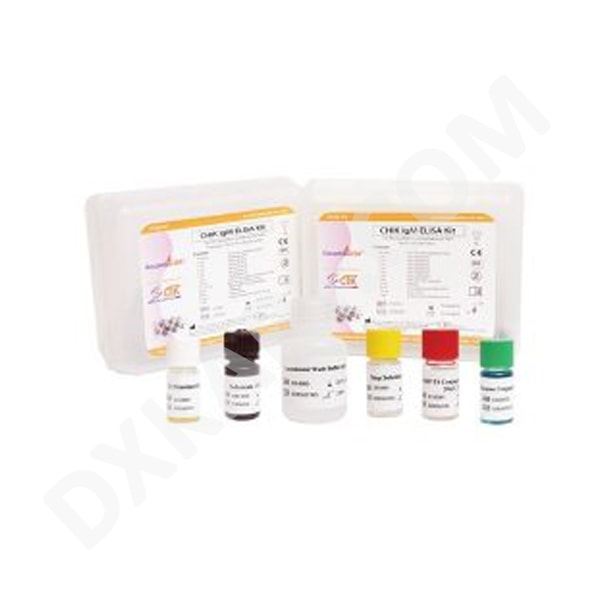CTK Biotech, USA CHIKUNGUNYA IgM ELISA Kit 96 Test
The RecombiLISA CHIK IgM ELISA Kit is a solid phase enzyme-linked immunosorbent assay for the qualitative detection of IgM A solid phase enzyme linked immunoabsorbent assay for the qualitative detection of IgM anti- Chikungunya virus in human serum or plasma. Each kit contains:
- Microwells coated with recombinant CHIK antigens
- CHIK IgM positive control
- CHIK IgM negative control
- Sample diluent
- HRP–anti-human IgM conjugate
- Wash buffer (30 x concentrate)
- TMB substrate A
- TMB substrate B
- Stop solution
- ELISA working sheet
- Product insert
- Store between 2-8°C
TEST PRINCIPLE : The CHIK IgM ELISA Kit is a solid phase enzyme linked immunoabsorbent assay based on the principle of the indirect immunoassay technique for the detection of IgM anti- Chikungunya virus in human serum or plasma. The CHIK IgM ELISA Kit is composed of two key components: 1) Solid microwells pre-coated with recombinant CHIK antigens; 2) Liquid conjugates composed of monoclonal anti-human IgM reagent conjugated with horse reddish peroxidase (HRP-anti-Human IgM conjugates). During the assay, the test specimen is first incubated with the coated microwells. IgM anti- Chikungunya virus, if present in the specimen, binds to the antigen coated on the microwell surface. In the second incubation with the HRP-anti Human IgM conjugates, the IgM anti Chikungunya antibody absorbed on the surface of microwell reacts to the conjugates, forming a complexed conjugates. Unbounded conjugates are then removed by washing. The presence of the complexed conjugates is shown by a blue color upon additional incubation with TMB substrate. The reaction is stopped with Stop Solution and absorbances are read using a spectrophotometer at 450 /620-690 nm.



